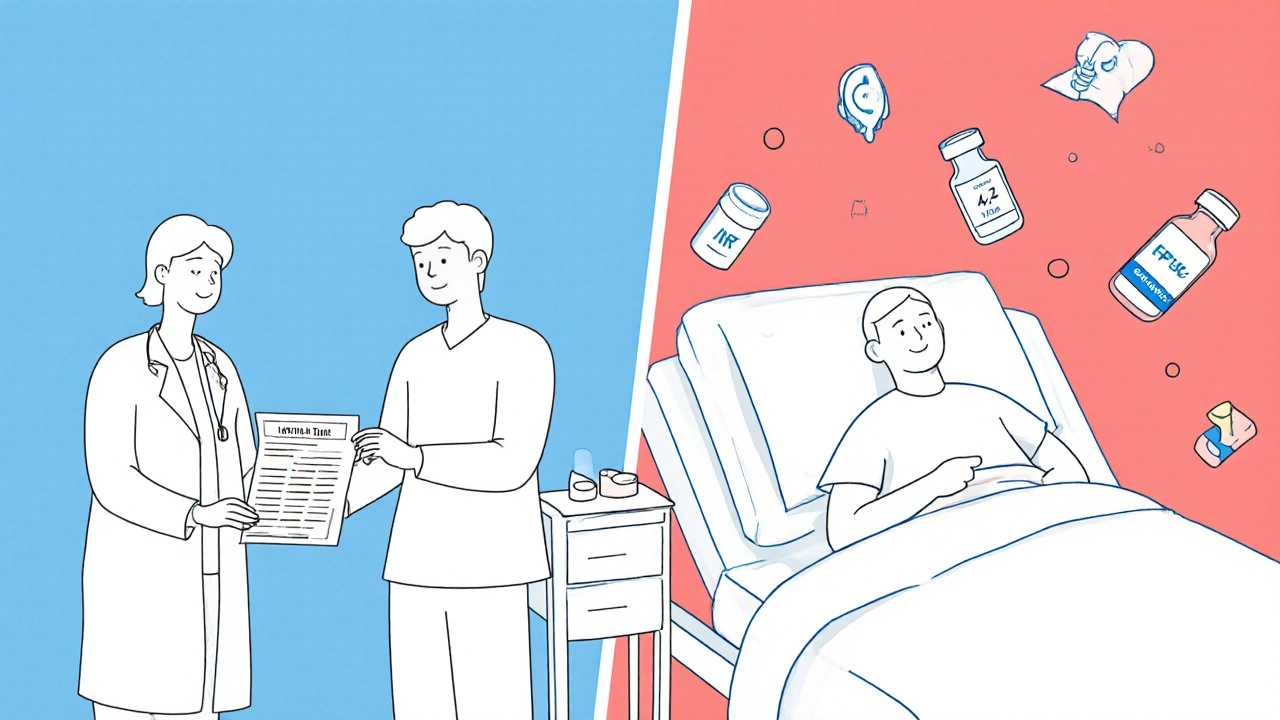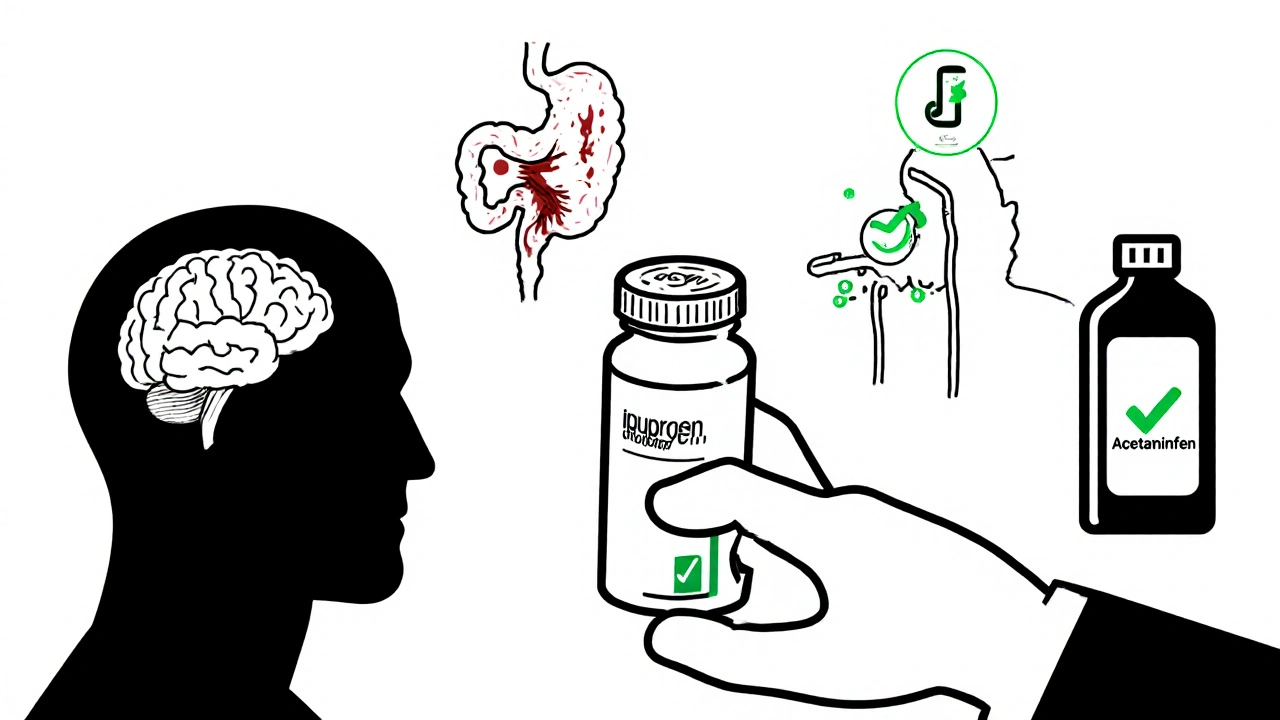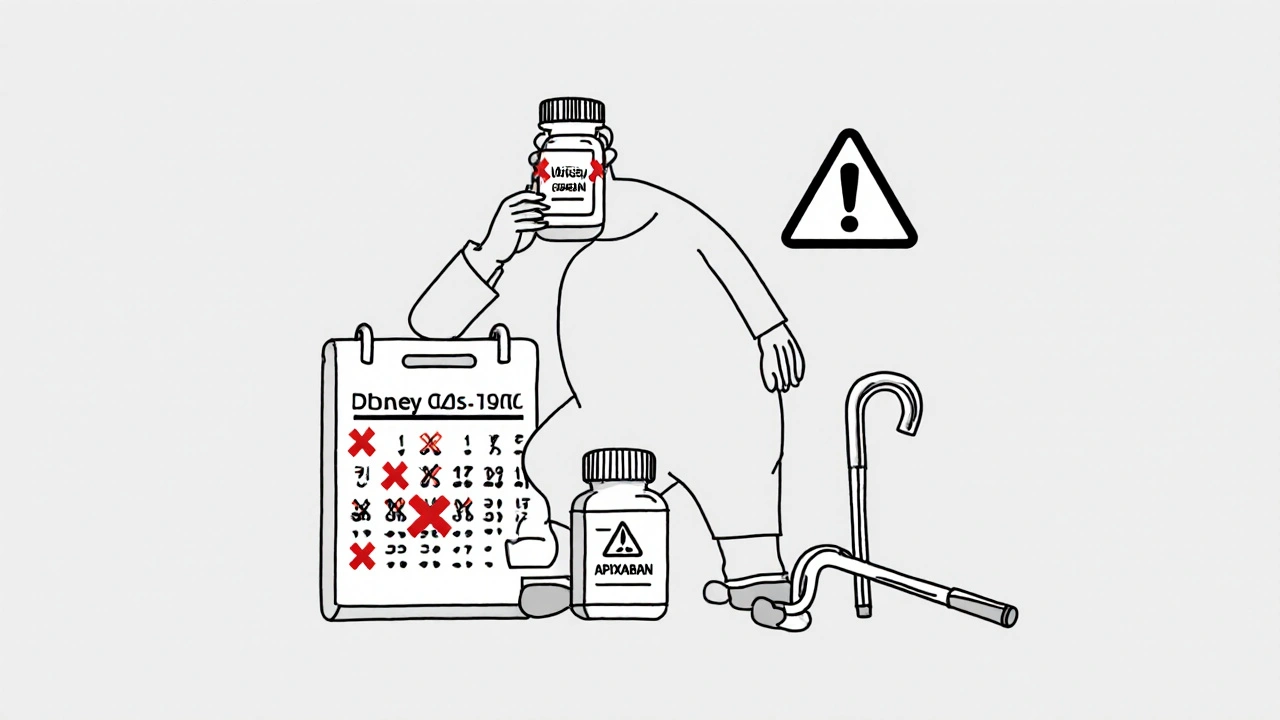Anticoagulant Bleeding Risk Calculator
Calculate Your Bleeding Risk
This tool estimates your risk of bleeding while taking anticoagulants based on factors discussed in the article. It's not a substitute for medical advice but can help you discuss risks with your doctor.
Risk Factors
Your Bleeding Risk Assessment
What this means:
Key Recommendations Based on Your Risk Level
Every year, over 2 million people in the U.S. take blood thinners to prevent strokes, clots, or pulmonary embolisms. But for every person protected from a clot, another faces the quiet danger of uncontrolled bleeding. Anticoagulants save lives-but they can also kill if not managed right. The real challenge isn’t just taking the pill. It’s knowing when to take it, who to trust with your care, and what to do if things go wrong.
Why Blood Thinners Are a Double-Edged Sword
Anticoagulants don’t actually thin your blood. They slow down the clotting process. That’s useful if you have atrial fibrillation, a mechanical heart valve, or a history of deep vein thrombosis. But if you fall, cut yourself, or have internal bleeding from an ulcer or tumor, your body can’t seal the damage fast enough. The risk isn’t theoretical. About 1 to 3% of people on anticoagulants have a major bleeding event each year. That’s 1 in every 30 to 100 patients. For those over 75, the risk doubles or triples. And if your kidneys aren’t working well? Your bleeding risk goes up again. These aren’t just numbers-they’re real people in emergency rooms, sometimes because a simple dose error or missed lab test was overlooked.Warfarin vs. DOACs: What’s the Real Difference?
For decades, warfarin was the only option. It’s cheap-about $4 a month without insurance-but it’s finicky. You need frequent blood tests (INR checks) to make sure your dose is right. The target range is usually 2.0 to 3.0. If your INR drops below 2, you’re at risk for a clot. If it climbs above 4, you’re at high risk for bleeding. Studies show that if your time in therapeutic range (TTR) falls below 70%, your bleeding risk jumps by 15% for every 10% drop. Direct oral anticoagulants (DOACs)-like apixaban, rivaroxaban, dabigatran, and edoxaban-changed the game. They don’t need routine blood tests. Dosing is fixed. And overall, they cause 19-20% fewer major bleeds than warfarin. Apixaban stands out: in the ARISTOTLE trial, it cut major bleeding by 31% compared to warfarin. But DOACs aren’t perfect. They’re expensive-apixaban costs around $550 a month without insurance. They rely on kidney function. If your creatinine clearance (CrCl) falls below 25 mL/min, apixaban needs a lower dose. Rivaroxaban needs adjustment if CrCl drops below 50 mL/min. And if you’re on dialysis? DOACs are often avoided entirely. Warfarin still wins in two cases: mechanical heart valves (especially mitral valves) and antiphospholipid syndrome. DOACs have failed in these scenarios, with higher rates of clots. So switching off warfarin here isn’t just risky-it’s dangerous.Who’s Most at Risk for Bleeding?
Not everyone on anticoagulants has the same risk. Some people are walking time bombs. Here’s who needs extra caution:- People over 75: Bleeding rates are 2 to 3 times higher.
- Those with kidney disease: CrCl under 50 mL/min doubles major bleeding risk.
- Patients on dual therapy: Taking aspirin or clopidogrel with a blood thinner? Bleeding risk spikes 50-70%.
- People with liver disease or ulcers: Poor clotting factor production or fragile blood vessels increase vulnerability.
- Those with history of falls or dementia: Even a minor bump can lead to brain bleeding.

Reversing Anticoagulants: What Works and What Doesn’t
If someone on blood thinners starts bleeding badly, time is everything. Minutes matter. And the wrong treatment can cost lives. For warfarin, the fastest fix is four-factor prothrombin complex concentrate (4f-PCC). It fixes INR in 15 minutes. Fresh frozen plasma (FFP) takes hours to thaw and isn’t as effective. Vitamin K helps too-but it takes 8 to 24 hours to work. So in an emergency? 4f-PCC + vitamin K is the gold standard. For dabigatran (a direct thrombin inhibitor), there’s a specific antidote: idarucizumab. Given as two 2.5g IV doses, it reverses the drug in minutes. It’s expensive and not always available, but it’s life-saving. For apixaban, rivaroxaban, and edoxaban (Factor Xa inhibitors), the antidote is andexanet alfa. Approved in 2018, it works fast-but it costs about $13,000 per dose. Many hospitals don’t keep it on hand because of the price. That’s a real problem. If a patient is bleeding and the antidote isn’t available, doctors are stuck with supportive care: transfusions, pressure, and hoping for the best. Heparin? Protamine sulfate reverses unfractionated heparin well-up to 100% neutralization. But it barely works on low-molecular-weight heparins like enoxaparin. Only about 60% of anti-Xa activity is reversed. That’s why many hospitals avoid LMWH in patients with high bleeding risk.Preventing Bleeding Before It Starts
The best way to avoid a hemorrhage is to never let it happen. Here’s how:- Know your kidney function: Get a CrCl test before starting any DOAC and repeat every 3 to 6 months. More often if you’re older or have chronic kidney disease.
- Stop dual antiplatelet therapy: If you’re on aspirin or Plavix with a blood thinner, ask your doctor if you really need both. Often, you don’t.
- Use the lowest effective dose: For apixaban, the 2.5 mg twice-daily dose is recommended for patients over 80, under 60 kg, or with CrCl under 30 mL/min. Don’t default to the higher dose.
- Review all medications: NSAIDs like ibuprofen and naproxen increase bleeding risk. Even some herbal supplements (ginger, garlic, ginkgo) can interfere.
- Don’t stop your anticoagulant suddenly: Stopping warfarin or DOACs without a plan can trigger rebound clots. Always talk to your doctor first.
- Use desmopressin (DDAVP) in bleeding disorders: If you have von Willebrand disease or mild hemophilia, DDAVP can boost clotting factors before procedures. One study showed it cut blood loss by over 30% in women undergoing abortions while on anticoagulants.

When to Restart After a Bleed
Many patients stop their anticoagulant after a bleed-and never restart. That’s often the wrong move. The American College of Cardiology recommends restarting anticoagulation as soon as it’s safe. For someone with atrial fibrillation and a CHA₂DS₂-VASc score of 5, the risk of stroke without treatment is 5% per year. The risk of another bleed? Maybe 2-3% per year if managed properly. Restarting is almost always the right call if:- You have atrial fibrillation with a score of 2 or higher
- You have a mechanical heart valve
- You’ve had an unprovoked deep vein thrombosis
The Future: Better Tools on the Horizon
Scientists are working on solutions that could change everything. One promising drug is ciraparantag, a universal reversal agent. If it works as hoped, it could reverse all DOACs, heparin, and even some antiplatelets with one injection. It’s still in trials, but early results are strong. Point-of-care tests for DOACs are also coming. Right now, there’s no quick way to measure if rivaroxaban is still active in your blood. New assays could give results in minutes-like an INR test for warfarin. That could reduce bleeding events by 15-20% by catching overdoses early.Final Thought: It’s Not About Avoiding Blood Thinners. It’s About Managing Them Right.
Anticoagulants aren’t going away. As the population ages, more people will need them. The goal isn’t to avoid them. It’s to use them safely. Know your risk. Understand your drug. Ask about kidney function. Don’t take NSAIDs without talking to your doctor. Know what to do if you bleed. And never stop your medication without a plan. The right anticoagulant, at the right dose, for the right person-can prevent a stroke and save your life. But only if you’re paying attention.Can I take ibuprofen while on a blood thinner?
No, not without talking to your doctor. Ibuprofen and other NSAIDs like naproxen increase bleeding risk by irritating the stomach lining and interfering with platelet function. Even occasional use can raise your risk of gastrointestinal bleeding. Acetaminophen (Tylenol) is usually safer, but check with your provider first.
Do I need to get blood tests if I’m on a DOAC?
Routine blood tests aren’t required for DOACs like apixaban or rivaroxaban. But you still need kidney function tests (CrCl) before starting and every 3 to 6 months after. If your kidneys decline, your dose may need adjusting. Some hospitals offer special tests to measure DOAC levels if bleeding occurs or before surgery.
What should I do if I miss a dose of my blood thinner?
If you miss a dose, take it as soon as you remember-if it’s still the same day. If it’s almost time for your next dose, skip the missed one. Never double up. Doubling your dose increases bleeding risk without adding protection. Always check your medication guide or call your doctor for specific instructions.
Are there natural alternatives to blood thinners?
No. Supplements like fish oil, garlic, ginger, ginkgo, or turmeric may have mild blood-thinning effects, but they are not reliable or safe replacements for prescribed anticoagulants. Relying on them instead of medication can lead to stroke or clot-related death. Always tell your doctor about any supplements you’re taking.
Can I have surgery if I’m on a blood thinner?
Yes, but timing matters. For minor procedures, you may not need to stop. For major surgery, your doctor will pause your anticoagulant days before and restart it after, based on your clot and bleeding risk. Never stop on your own. A plan must be made with your surgeon and prescribing doctor.
What are the signs of internal bleeding on anticoagulants?
Watch for unexplained bruising, blood in urine or stool, severe headaches, dizziness, vomiting blood, or sudden weakness on one side of the body. These could mean bleeding in the brain, gut, or kidneys. If you notice any of these, go to the ER immediately. Don’t wait.



